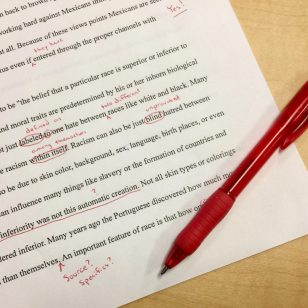By Kelsey Boudin,
President and Founder, Southern Tier Communications Strategies, LLC
One of my favorite memories of journalism school was an exercise for which very few of us were prepared. If I recall correctly, we were second-semester freshmen or first-semester sophomores in Newswriting I, the primer into the basics of news gathering and reporting.
Years later, as my collection of writing awards on the wall grew larger, I lamented the number of co-workers who had come and gone from the paper with little grasp of those elementary journalism concepts. But I digress.
The professor, one of my favorites at St. Bonaventure University, stood at the podium and orchestrated a mock press conference as the “fire chief.” A fire had destroyed an apartment building, and the loss of life was substantial. We had to figure out, on the fly, how to ask questions during a press conference with very little prep time.
What we learned about news gathering from the ‘fire press conference.’
We referred to the textbook for the basic info about the fire that you might find in a standard press release. Memory of the mock details has faded, but it was a crash course into covering a tragedy. We could reference the location, number dead and injured, responding agencies, time on scene and when the blaze was contained, and cause under investigation.
The press conference began. Naturally, none of us wanted to venture the first question for fear of sounding foolish. We all sat quietly, and the professor waited patiently for something to answer.
“Was anyone hurt?” someone asked, breaking the ice, but apparently having failed to review the details we already knew.
“Yes.”
Silence.
“Were they taken to the hospital?” another asked.
“Yes.”
More silence.
We collectively managed a few more surface-level questions meriting mostly yes and no responses. As I recall, we were then turned loose to begin crafting a news story.
We didn’t get very far. I remember at first wondering how it’d be possible to cram a fatal fire story into 350 words “on deadline” by the end of the class period. With minutes left and most of us staring at a blinking cursor and a few sentences merely regurgitating the sparse info from the press release, you could smell the failure in the room.
I imagine a few of my classmates who had never received anything below an A were praying it wouldn’t be graded. I had made peace with D-minus some 15 minutes prior.
The professor interjected. “Anyone care to try to press conference again?” she asked. We all breathed a sigh of relief as the apparent failure was only a valuable lesson learned. She counseled us on the yes and no questions and urged us to think like a reader and ask the questions we would want to know.
Let’s try that press conference again.
Questions rolled smoothly the next class session as we probed for answers. Yes and no questions still received yes and no answers, but they at least inspired follow-up questions seeking more depth.
“What can you tell us about where and why the fire is believed to have started at this point?” one asked.
“We still have some digging to do, but it appears to have started in a lower apartment bedroom. I can’t render an official cause just yet, until the fire investigation team finishes its work, but it appears to be electrical in nature. No foul play is suspected.”
“Of the four who died in the fire, do you have any positive identities at this point, and can we differentiate which apartment or apartments they lived in?” another asked.
“Yes, the four who died all lived in a lower apartment where the fire is believed to have started. I’m not at liberty to release their identities just yet until next of kin have been notified,” the professor responded, noting only that the deceased were a family with a father, mother and two children. “The eight who were injured lived in other apartments and on different floors, and their injuries ranged from smoke inhalation to serious burns. I also can’t release their names at this time.”
“Do you have an update on their conditions at this time?”
“No, I wouldn’t speculate on their conditions,” the professor said. “You’d have to follow up with the hospitals for that. I can tell you that five are being treated here in the city hospital and three were transported to the trauma center.”
We asked about damage estimates, who owned the building, how many families were displaced, if there was any timeline for their return, if any humanitarian agencies had stepped in to help, etc. We received answers. It sounded like a legitimate professional press conference.
What a difference one class period and a little bit of news-gathering perspective made.
How the exercise prepared my news gathering tactics years later.
Of course, that one mock session early in my college career was one of numerous opportunities to practice interviewing and press conference tactics before becoming a professional journalist. But it laid the foundation for:
- Participating with confidence (being aggressive, if necessary)
- Avoiding yes and no questions
- Asking deep questions for substance and explanation
- Setting a tone for follow-up questions
- Seeing past PR speak
In a presser, you must be prepared with the questions you need to have answered. They’re fast paced. You’re often participating with competing media outlets. You may be called upon only once and not offered a chance for follow up.
Have any questions to guide your newswriting tactics. Feel free to drop me a line.







